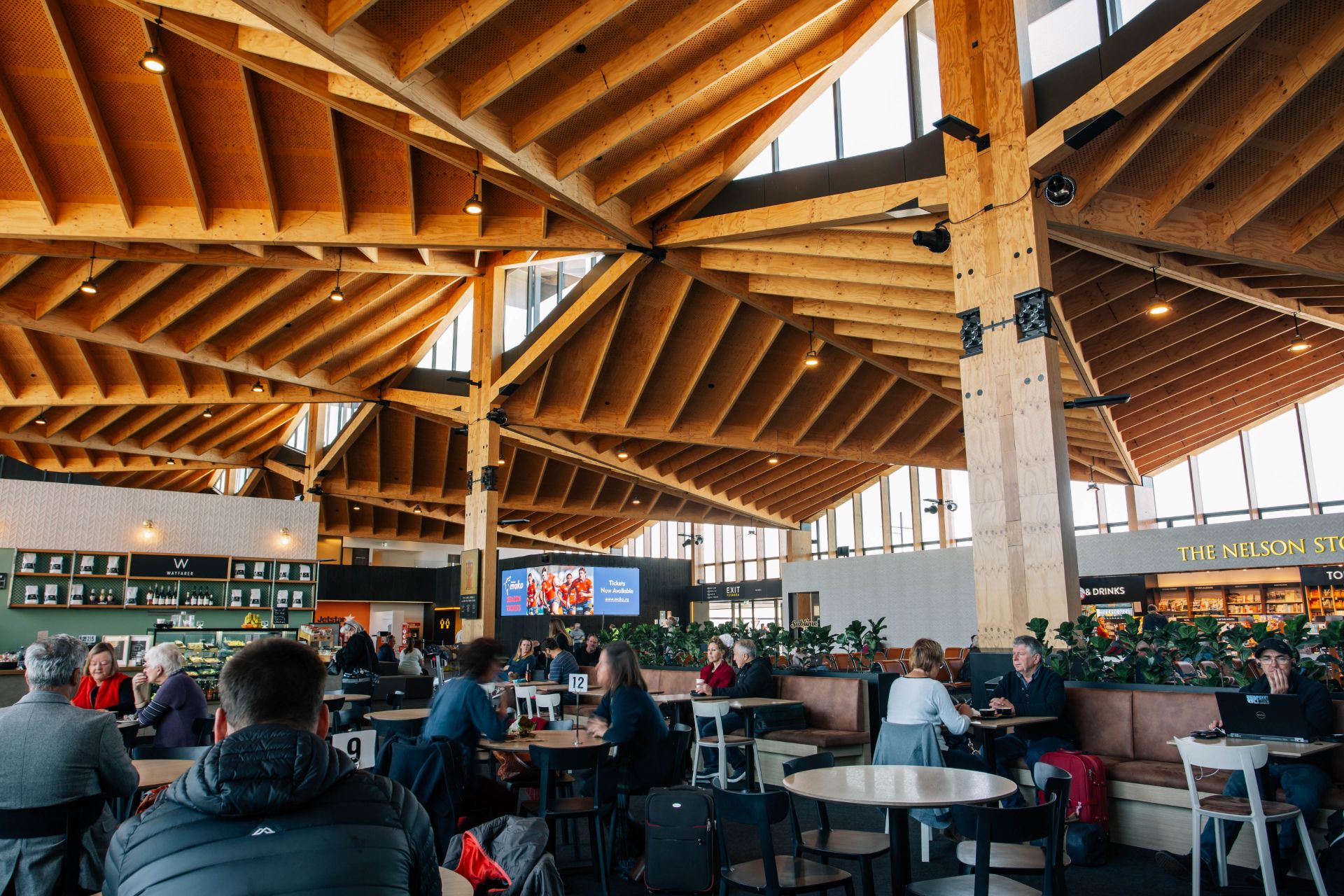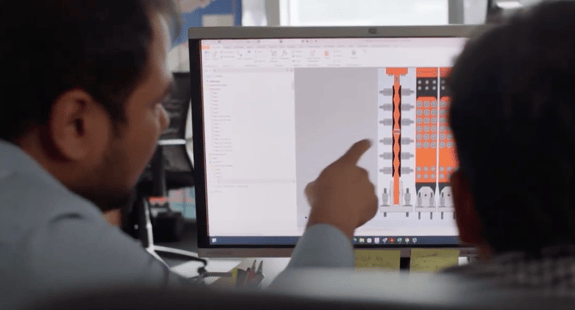
NELSON AIRPORT TERMINAL
Innovative Mass Timber Airport in a High Seismic Region
The new Nelson Airport is situated in one of the most picturesque areas of New Zealand, which welcomes a growing number of tourists. The design of the airport needed to be modular to account for future expansion and was specified to be built from locally sourced materials. The architectural response to this brief was to mirror the local Richmond Ranges, with an undulating timber roof that sits high above the ground.
The building is 3800m2 of ground floor space with 1200m2 of mezzanine area. The roof consists of 7 repeated bays stretching over 100m. This sits atop highly liquefiable ground in a high seismic hazard zone. The building is Importance Level 3 due to its function as an airport terminal.
The long-span timber roof sits on widely spaced columns, to maximize the open space and glazing. The roof spans 18.6m between columns, and each bay is 15m wide. This presented an engineering challenge to form the roof without a visually heavy structure. The roof was designed as a “folded plate” structure.
Seismic & Structural Design Challenge
The seismic demands on the building are relatively high, and the timber structure was tall and flexible with little inherent ductility. Nelson has a medium to high level of seismicity (with a hazard factor of 0.27). The lateral resisting system in the short direction across the building consists of 15 cantilevered LVL columns, staggered along each façade. The longitudinal direction (along the 100m length) consists of a central “moment-resisting frame” formed by the “diamond” clerestory LVL beams and 7 LVL columns. The diamond beams follow the shape of a traditional beam bending moment diagram. The “moment” is generated through a tension and compression couple in these beams which create a push-pull on the column.
As in most timber structures, ductility was required through an additional damping mechanism. Displacement-based design method was used and verified using non-linear time history analysis. The NLTHA modelled the Tectonus device behaviour and the hinges at the bottom of the reinforced concrete mezzanine columns.
The highest point of the roof is 12m above the ground floor slab, so the timber structure is stiffness-governed. Even though the columns are 1220mm by 300mm, which is a full LVL billet, cold-laminated to the maximum thickness, the elastic component of the hysteretic loop is significant. The height of the columns also meant that any additional rotation at the base was amplified. The high initial stiffness of the Tectonus device before the “slip” point was important to keep the overall drift down. Tectonus devices have a capacity of 350kN in tension-only with 20mm displacement.
Long Term Protection
The use of the Tectonus devices enhanced the seismic performance of the building, making the grand heights of the roof possible while keeping the column sizes proportional and economical to the space. The result is an exquisite building that showcases an aesthetically pleasing facility.
As the main regional airport, it is essential to ensure operational continuity through earthquakes which are common in the region. Having invested in the self-centering seismic technology developed by Tectonus, the region can be assured of not just saving lives but also having a facility that can be used almost immediately after a seismic event.

